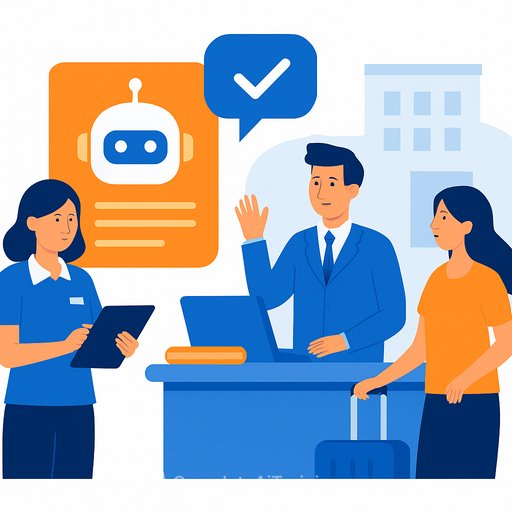AI and frontline burnout: what HR needs to do now
A new global study of 8,200 frontline employees across 10 countries signals a clear pattern: employees using AI report less burnout. Only 41% of AI users say they're burnt out, versus 54% of non-users. Adoption is already widespread, with more than one in three frontline workers using AI. Usage is highest in India (84%), followed by Mexico (52%) and Australia (39%).
Frontline employees account for nearly 80% of the global workforce, so any shift in their experience matters. Burnout remains elevated across this population, with other research citing roughly half of workers feeling burnt out. The takeaway for HR: AI can reduce friction in daily work, but the human factors around trust, skills, and job security will decide outcomes.
The upside: AI is linked to lower burnout
Employees are comfortable using AI for core people processes and routine work. Comfort levels are high for HR tasks (78%), everyday work tasks (76%), and even support with writing performance evaluations (71%). Less time on low-value tasks helps people protect energy for high-impact work and customer demands.
The risk: job security fears are fueling unhealthy behavior
Two in three frontline employees worry AI could replace their jobs, and 65% fear colleagues with stronger AI skills could take their roles. One in five believe their job will be fully replaced within five years; one in four say parts of their work already have been. Nearly half are "proving their worth" by taking extra shifts, working longer hours, and even working while sick.
As Dan Schawbel notes, these reactions aren't sustainable: leaders need open conversations, clear plans, and training so people can work alongside AI with confidence.
What HR should do next
- Publish the AI plan. Explain near-term pilots, long-term goals, impacted roles, and success metrics. Make it easy to find and easy to understand.
- Set guardrails. Define where AI is recommended, optional, or off-limits. Address data privacy, accuracy checks, and manager sign-offs.
- Guarantee "no extra hours for AI kudos." Make it explicit: using AI is about better work, not longer work. Tie this to performance guidance.
- Fund skills with time. Offer paid learning hours, not just links. Provide role-based learning paths and quick wins for frontline roles.
- Certify and reward AI skills. Recognize proficiency in scheduling tools, knowledge search, and documentation support. Link badges to pay and progression.
- Pilot, then scale. Start with high-volume pain points (scheduling, policy lookup, benefits questions). Measure time saved and error rates, then expand.
- Co-design with the frontline. Involve employees in tool selection and prompts. Add feedback loops and fix friction fast.
- Protect health and safety. Ban sick-day presenteeism. Track overtime tied to AI rollout and intervene early.
- Clarify data use. Explain how prompts, outputs, and performance data are stored and reviewed. Avoid shadow AI.
- Ensure equitable access. Provide devices, logins, and quick training for every shift and location. Don't let access gaps become skill gaps.
- Reinvest time savings. Convert efficiency gains into shorter shifts, more breaks, or focused service time-not extra administrative tasks.
- Report outcomes. Share adoption, time saved, and burnout trends with employees to build trust.
Where AI helps frontline work today
- Searching the handbook and summarising policies: 81%
- Recommending schedules aligned to preferences/availability: 80%
- Explaining and helping employees use benefits: 79%
- Providing training recommendations: 79%
- Updating certifications and skills records: 78%
- Supporting HR processes (e.g., forms, requests): 78%
- Assisting with routine workplace tasks: 76%
- Drafting performance evaluation inputs: 71%
Metrics HR should track
- Burnout rates and engagement by AI usage
- Overtime hours and shift swaps post-AI rollout
- Presenteeism (working while sick) and sick-leave trends
- Time to complete key tasks (scheduling, policy lookup, benefits actions)
- Adoption, proficiency, and satisfaction by site and shift
- Turnover and internal mobility tied to AI skill development
- Quality and safety incidents pre/post AI deployment
Practical next step
If your frontline is anxious about AI, start with a transparent plan and paid learning time. Then roll out one or two high-impact use cases, measure time saved, and report back to the team.
Need structured learning paths for managers and frontline teams? Explore role-based options at Complete AI Training and move people from worry to capability fast.
Your membership also unlocks:






